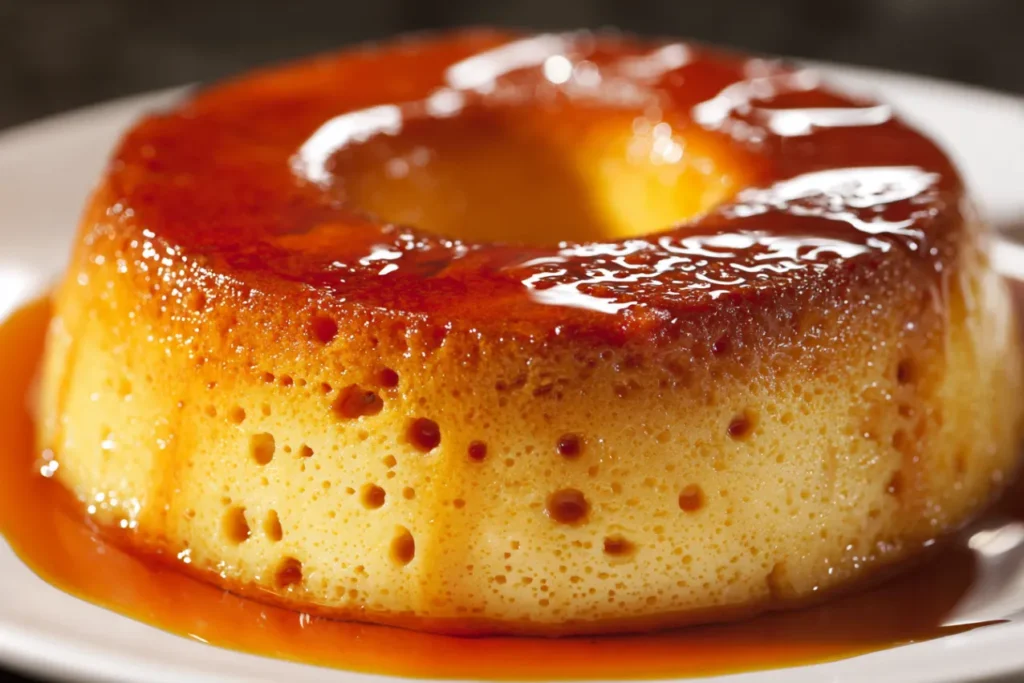
Introduction
There’s something truly magical about watching a perfect Portuguese flan recipe come together in your kitchen. As someone who’s been perfecting this beloved Pudim com Furinhos for over fifteen years, I can tell you that this isn’t just any ordinary dessert—it’s a piece of Portuguese culinary heritage that transforms simple ingredients into pure joy.
I still remember the first time my Portuguese neighbor, Maria, shared this recipe with me. She insisted that the secret wasn’t just in the ingredients, but in understanding the soul of this traditional Portuguese flan recipe. Those characteristic “furinhos” (little holes) aren’t accidents—they’re the hallmark of a perfectly executed pudim that’s been lovingly prepared using time-honored techniques.
What makes this Portuguese flan recipe so special is its incredibly light, almost cloud-like texture that melts on your tongue, leaving behind the most delicate vanilla sweetness. Unlike heavy, dense flans, this pudim practically floats, and those signature air pockets create the most delightful textural experience you’ll ever have with a custard dessert.
Today, I’m sharing everything I’ve learned about creating this masterpiece, from selecting the right ingredients to achieving those perfect furinhos that make this Portuguese flan recipe truly authentic.

Pudim com Furinhos – Portuguese Flan with Airy Holes
Experience the magic of this light, creamy Portuguese-style flan known as Pudim com Furinhos. A classic dessert with signature airy holes that melts in your mouth.
Ingredients
Instructions
- 1Preheat oven to 180°C (350°F). Coat flan mold with liquid caramel.
- 2Blend condensed milk, whole milk, eggs, cornstarch, and vanilla until smooth.
- 3Pour mixture into caramel-coated mold and cover with foil.
- 4Bake in bain-marie for 1 hour 30 minutes until set with air bubbles.
- 5Cool completely before unmolding and chill before serving.
Ingredients: The Foundation of Perfect Portuguese Flan
Key Ingredients and Their Essential Roles
Every ingredient in this Portuguese flan recipe serves a specific purpose, and after years of experimentation, I’ve learned that quality truly matters here.
Sweetened Condensed Milk: This is the heart of our Portuguese flan recipe. It provides both sweetness and that signature creamy richness that makes pudim so irresistible. The condensed milk also helps create the smooth, silky texture we’re after.
Whole Milk: Using the condensed milk can as your measuring cup isn’t just convenient—it creates the perfect ratio. The whole milk dilutes the condensed milk to the ideal consistency while adding essential proteins that help the flan set properly.
Fresh Eggs: These are your binding agents and what give the pudim its custard-like structure. Always use room temperature eggs for better incorporation and smoother results.
Cornstarch: This is my secret weapon for achieving those perfect furinhos. The cornstarch creates tiny air pockets during the steaming process, giving us those characteristic holes that make this Portuguese flan recipe so unique.
Pure Vanilla Extract: Never skimp on vanilla quality. Real vanilla extract adds that warm, aromatic depth that complements the caramel perfectly.
Liquid Caramel: This creates the gorgeous amber coating and adds that essential bitter-sweet contrast to balance the rich custard.
How to Choose High-Quality Ingredients for Your Portuguese Flan Recipe
After making this recipe hundreds of times, I’ve learned that ingredient quality can make or break your pudim. Here’s what I look for:
Choose sweetened condensed milk with a thick, creamy consistency—avoid brands that seem too thin or watery. For milk, always go with whole milk; reduced-fat versions simply don’t provide the richness this Portuguese flan recipe deserves.
When selecting eggs, look for ones with bright, firm yolks. Farm-fresh eggs will give you the best flavor and the most beautiful golden color in your finished pudim.
For vanilla extract, invest in pure vanilla rather than imitation. The difference is noticeable, especially in a delicate dessert like this where vanilla plays such a prominent role.
Substitutions That Actually Work (Tested in My Kitchen)
Over the years, family members with dietary restrictions have asked me to adapt this Portuguese flan recipe, and I’ve successfully tested several substitutions:
For Lactose-Free Version: Replace whole milk with lactose-free whole milk or full-fat coconut milk. The coconut milk adds a subtle tropical note that’s surprisingly delicious with the caramel.
For Reduced Sugar: You can use sugar-free condensed milk, though the texture will be slightly different. Add an extra teaspoon of cornstarch to help with setting.
Egg Alternatives: For each egg, you can substitute with 1/4 cup of silken tofu blended until smooth, though this will change the traditional texture somewhat.
Vanilla Substitutes: Almond extract (use half the amount) or even a teaspoon of rum extract can create interesting flavor variations while maintaining the essence of this Portuguese flan recipe.
Preparation Steps: Mastering the Art of Portuguese Flan
How I Prepare Before Cooking
Success with this Portuguese flan recipe starts long before you turn on the oven. I always begin by organizing my workspace and preparing my equipment. This isn’t just about efficiency—it’s about ensuring every step flows smoothly when timing matters.
First, I bring all ingredients to room temperature about an hour before starting. Cold ingredients don’t blend as smoothly and can create lumps in your final pudim.
I prepare my caramel-coated mold first, ensuring every surface is covered. The caramel should be fluid enough to coat evenly but not so hot that it starts to harden immediately.
Setting up the bain-marie is crucial—I use a large roasting pan and have my kettle ready with hot water. The water should come halfway up the sides of your mold for even cooking.
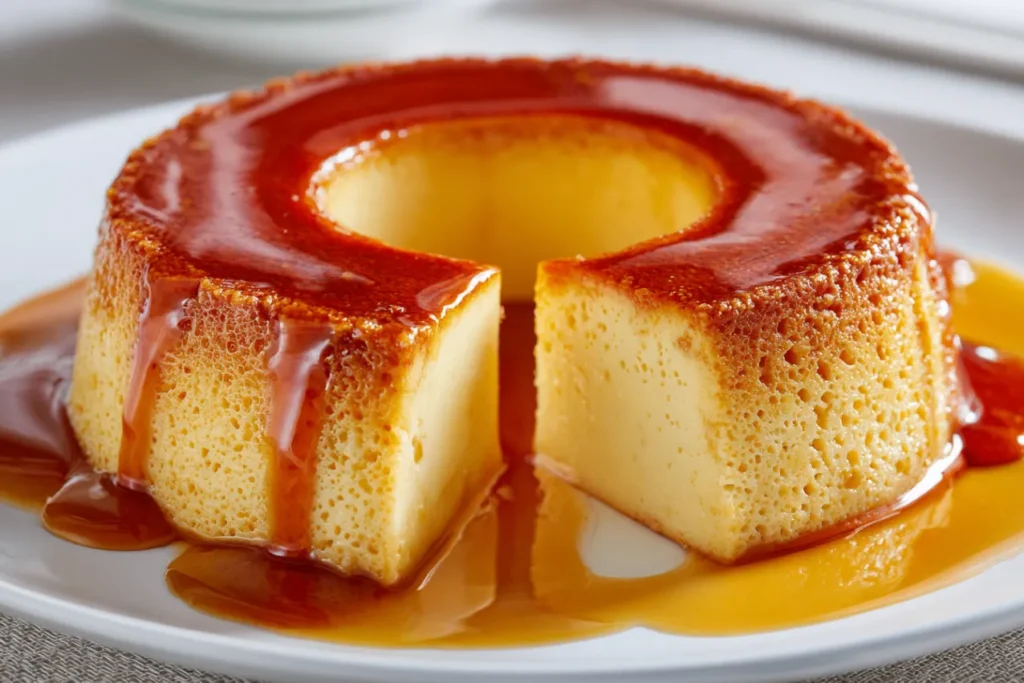
Step-by-Step Instructions with Professional Tips
Step 1: Oven and Mold Preparation Preheat your oven to 180°C (350°F). This temperature is perfect for gentle cooking that creates those signature furinhos without overcooking the custard.
Coat your flan mold thoroughly with liquid caramel. I tilt and rotate the mold to ensure complete coverage, paying special attention to any decorative ridges or corners where caramel might pool.
Step 2: Creating the Perfect Custard Base In your blender, combine all ingredients in this specific order: sweetened condensed milk first, then whole milk, followed by eggs, cornstarch, and finally vanilla extract.
Blend on medium speed for exactly 30 seconds. This Portuguese flan recipe is sensitive to overmixing, which can eliminate the air bubbles that create our beloved furinhos.
Step 3: Assembly and Baking Pour the mixture through a fine-mesh strainer directly into your caramel-coated mold. This removes any lumps and ensures silky smoothness.
Cover tightly with aluminum foil—this is non-negotiable for proper steaming. Place in your prepared bain-marie and carefully pour hot water around the mold.
Bake for 1 hour and 30 minutes. The pudim is ready when a knife inserted near the center comes out mostly clean but still slightly moist.
Step 4: Cooling and Setting Remove from the water bath and let cool completely at room temperature before refrigerating. This gradual cooling prevents cracking and helps maintain those perfect air pockets.
Refrigerate for at least 4 hours, though overnight is even better for this Portuguese flan recipe.
Common Mistakes to Avoid (Learned from Real Experience)
In my early days making this Portuguese flan recipe, I made several mistakes that taught me valuable lessons:
Overmixing the Batter: I once blended the mixture for too long, thinking it would make it smoother. Instead, I eliminated all the air bubbles and ended up with a dense, solid flan without any furinhos.
Incorrect Water Bath Temperature: Using boiling water in the bain-marie can cause the custard to cook too quickly and become rubbery. Always use hot, not boiling, water.
Rushing the Cooling Process: I learned the hard way that placing a hot pudim directly in the refrigerator causes condensation under the foil, which can make the surface watery.
Inadequate Caramel Coverage: Skimping on caramel coating leads to sticking and an uneven presentation when unmolding.
Serving & Final Touches
Beautiful and Creative Presentation Ideas
This Portuguese flan recipe creates such a stunning dessert that simple presentation often works best. When unmolding, run a thin knife around the edges, place your serving plate over the mold, and flip confidently in one smooth motion.
For special occasions, I love to garnish with fresh berries that complement the caramel’s color—strawberries and raspberries are particularly beautiful. A few mint leaves add a lovely color contrast and fresh aroma.
For a more elegant presentation, drizzle additional caramel sauce around the plate and dust lightly with powdered sugar. The contrast between the glossy caramel and the delicate white powder is simply stunning.
Consider serving individual portions in ramekins for dinner parties. This Portuguese flan recipe adapts beautifully to smaller molds, though you’ll need to reduce the cooking time to about 45-50 minutes.
Best Sides and Pairings (Family-Tested Combinations)
While this pudim is absolutely perfect on its own, I’ve discovered some wonderful accompaniments over the years. Fresh fruit provides a lovely contrast to the rich custard—try sliced pears poached in white wine, or a simple fruit salad with citrus to cut through the sweetness.
For coffee lovers, serve alongside a strong espresso or Portuguese coffee. The bitter notes complement the sweet caramel beautifully.
During holidays, I sometimes serve thin, crispy cookies on the side—Portuguese biscoitos or Italian amaretti both work wonderfully.
A small glass of Port wine turns this into an sophisticated adult dessert, especially for dinner parties where you want to showcase this authentic Portuguese flan recipe.
Storing and Reheating Leftovers Safely
Properly stored, this Portuguese flan recipe keeps beautifully for up to 5 days in the refrigerator. Always cover tightly with plastic wrap to prevent the pudim from absorbing other flavors.
Never freeze this dessert—the texture becomes grainy and those precious furinhos disappear completely.
For the best experience, always serve chilled directly from the refrigerator. This pudim is meant to be enjoyed cold, and the texture is most perfect at refrigerator temperature.
If you need to transport your pudim, keep it in its original mold until you’re ready to serve, then unmold at your destination for the most impressive presentation.
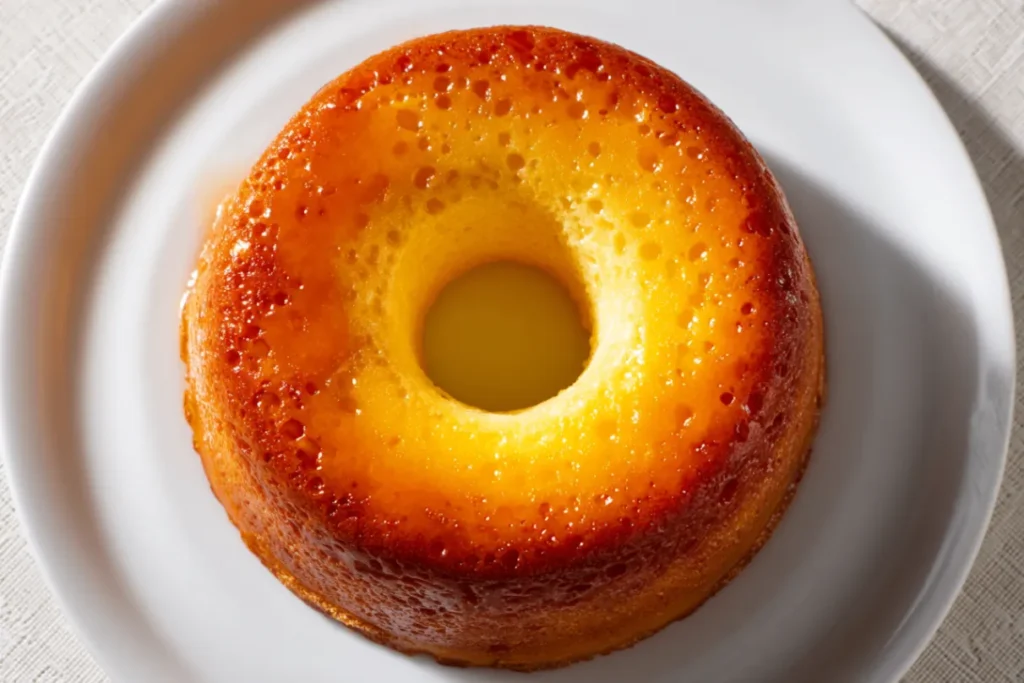
Frequently Asked Questions About This Portuguese Flan Recipe
1. Can I prepare this Portuguese flan recipe in advance? Absolutely! In fact, this pudim actually improves with time. I often make it 1-2 days ahead of serving. The flavors meld beautifully, and the texture becomes even more silky. Just keep it covered in the refrigerator and unmold just before serving for the most dramatic presentation.
2. What’s the best way to store leftovers? Cover your pudim tightly with plastic wrap and refrigerate for up to 5 days. I’ve found that keeping it in the original serving dish works best, as transferring can sometimes damage those delicate furinhos. Never freeze this dessert—it completely changes the texture.
3. How can I make this Portuguese flan recipe healthier? I’ve successfully made lighter versions using sugar-free condensed milk and adding an extra teaspoon of cornstarch for binding. You can also substitute half the whole milk with evaporated skim milk. While the texture changes slightly, it’s still delicious and significantly reduces calories.
4. Can I double the ingredients for a party? Yes, but use two separate molds rather than one large one. Large molds don’t cook evenly, and you’ll risk having raw centers or overcooked edges. I’ve learned that this Portuguese flan recipe works best in standard-sized molds for consistent results.
 DINNER
DINNER LUNCH
LUNCH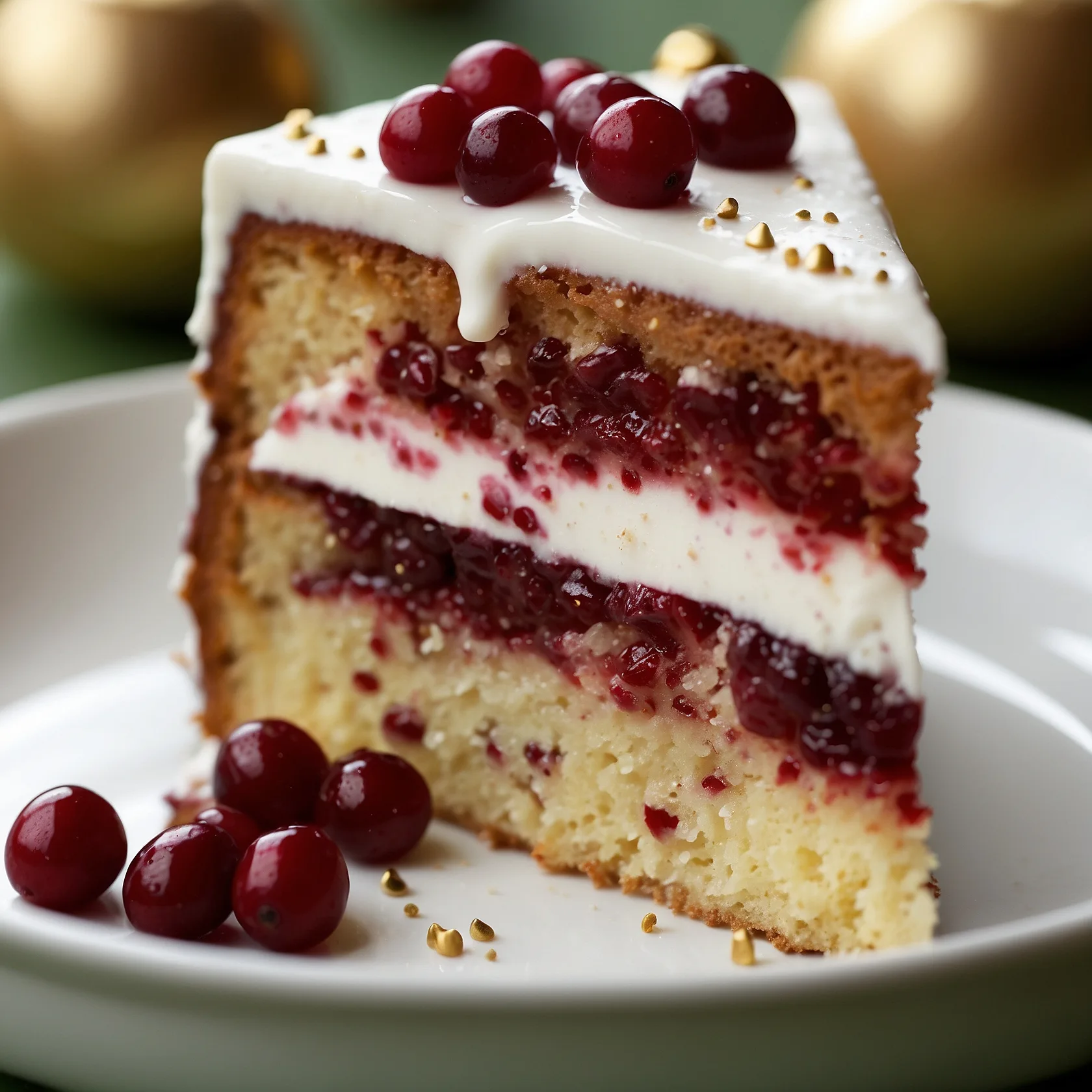 CAKE
CAKE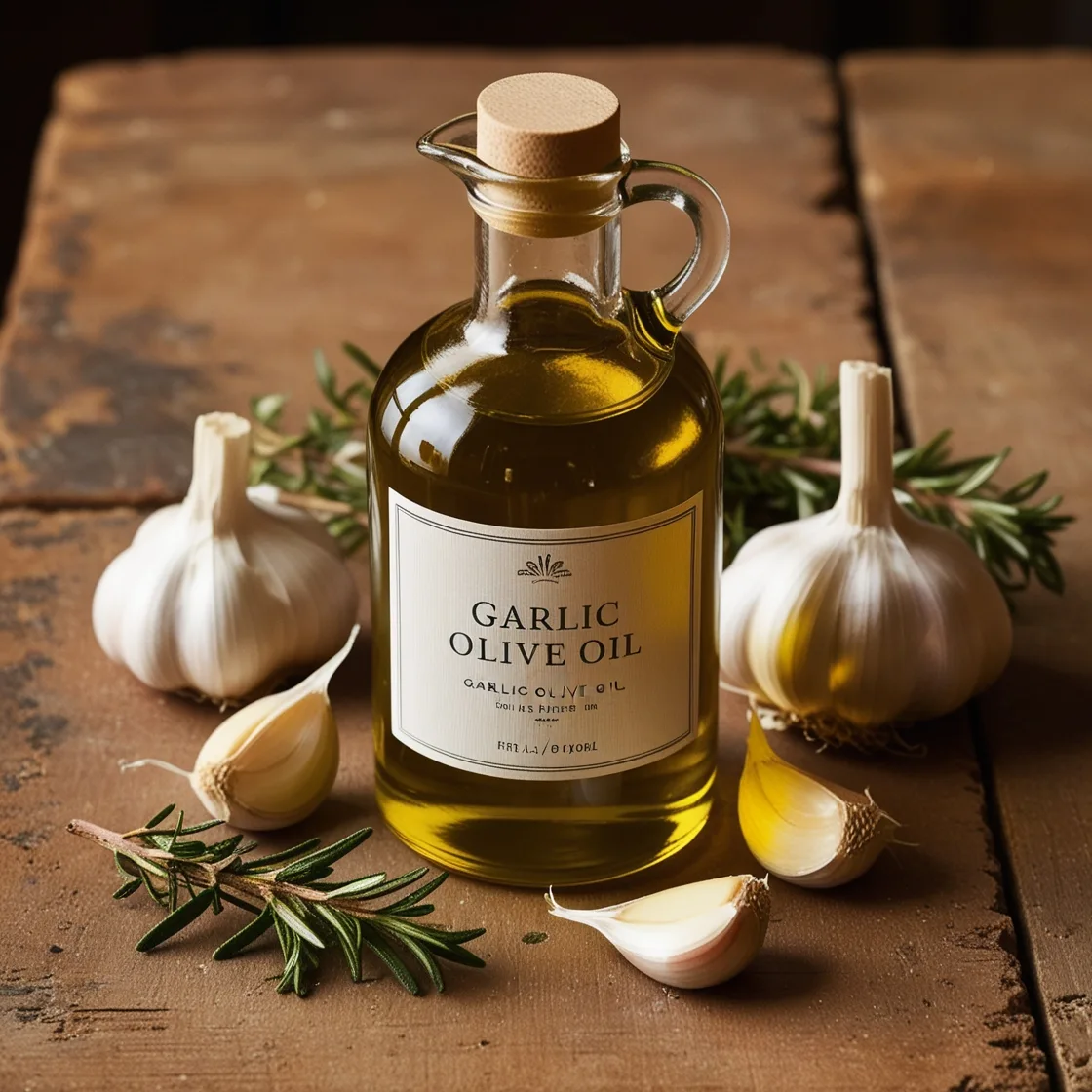 BREAKFAST
BREAKFASTFor more amazing recipes, be sure to check out our other sections to explore a variety of ideas that will enrich your cooking experience. Each section offers its own unique flavors to ensure a delightful culinary journey:
- Easy and Quick Recipes: A collection of dishes that guarantee delicious meals with minimal effort and time.
- Healthy Recipes: Discover healthy and delicious options that fit your lifestyle.
- Desserts: A diverse selection of sweets that will add a special touch of sweetness to your table.
- Lunch Recipes: Tasty lunch ideas that you can easily prepare to delight your family.
- Dinner Recipes: Delicious and easy-to-make recipes that will make your dinner a memorable occasion.
5. What’s the biggest mistake people make with this recipe? The most common error I see is overmixing the batter, which eliminates the air bubbles essential for creating those signature furinhos. Blend just until combined—about 30 seconds maximum. Also, many people skip the bain-marie, but the gentle steam cooking is absolutely essential for the proper texture.
Conclusion
This Portuguese flan recipe has brought joy to countless family gatherings and dinner parties in my home. There’s something deeply satisfying about mastering a traditional recipe that’s been passed down through generations, and seeing the delight on people’s faces when they experience those perfect furinhos for the first time.
The beauty of Pudim com Furinhos lies not just in its incredible taste, but in its ability to connect us to Portuguese culinary traditions. Every time you make this recipe, you’re participating in a centuries-old tradition of creating comfort and joy through food.
I encourage you to try this Portuguese flan recipe and make it your own. Don’t be discouraged if your first attempt isn’t perfect—mine certainly wasn’t! Each time you make it, you’ll understand the nuances a little better, and soon you’ll be creating your own perfect furinhos.
Please share your results in the comments below! I love seeing how this recipe turns out in different kitchens, and hearing about the variations and adaptations people create. Tag me in your photos—there’s nothing that makes me happier than seeing this traditional Portuguese flan recipe bringing families together around the dinner table.
Happy cooking, and may your pudim always have perfect furinhos!
